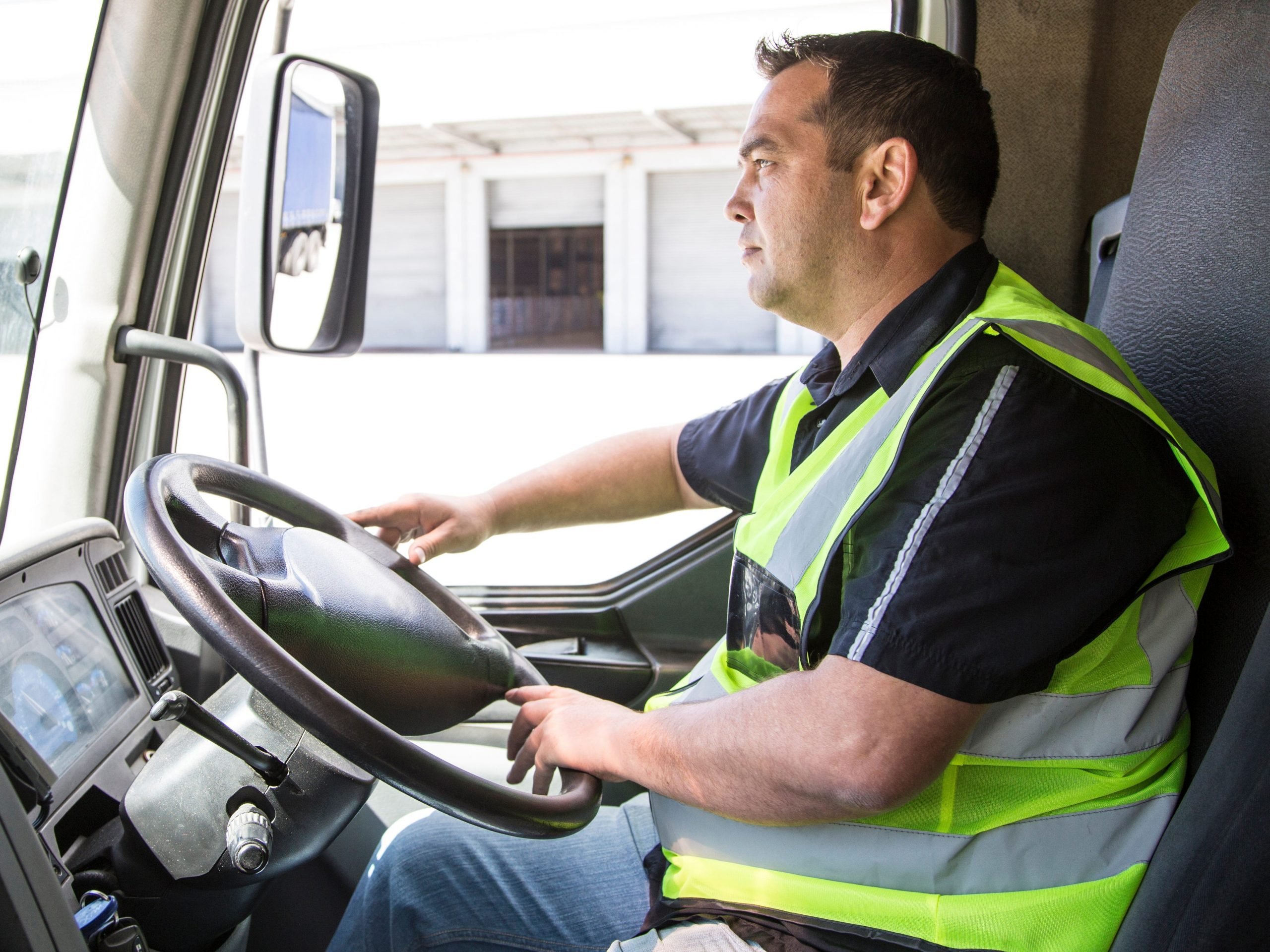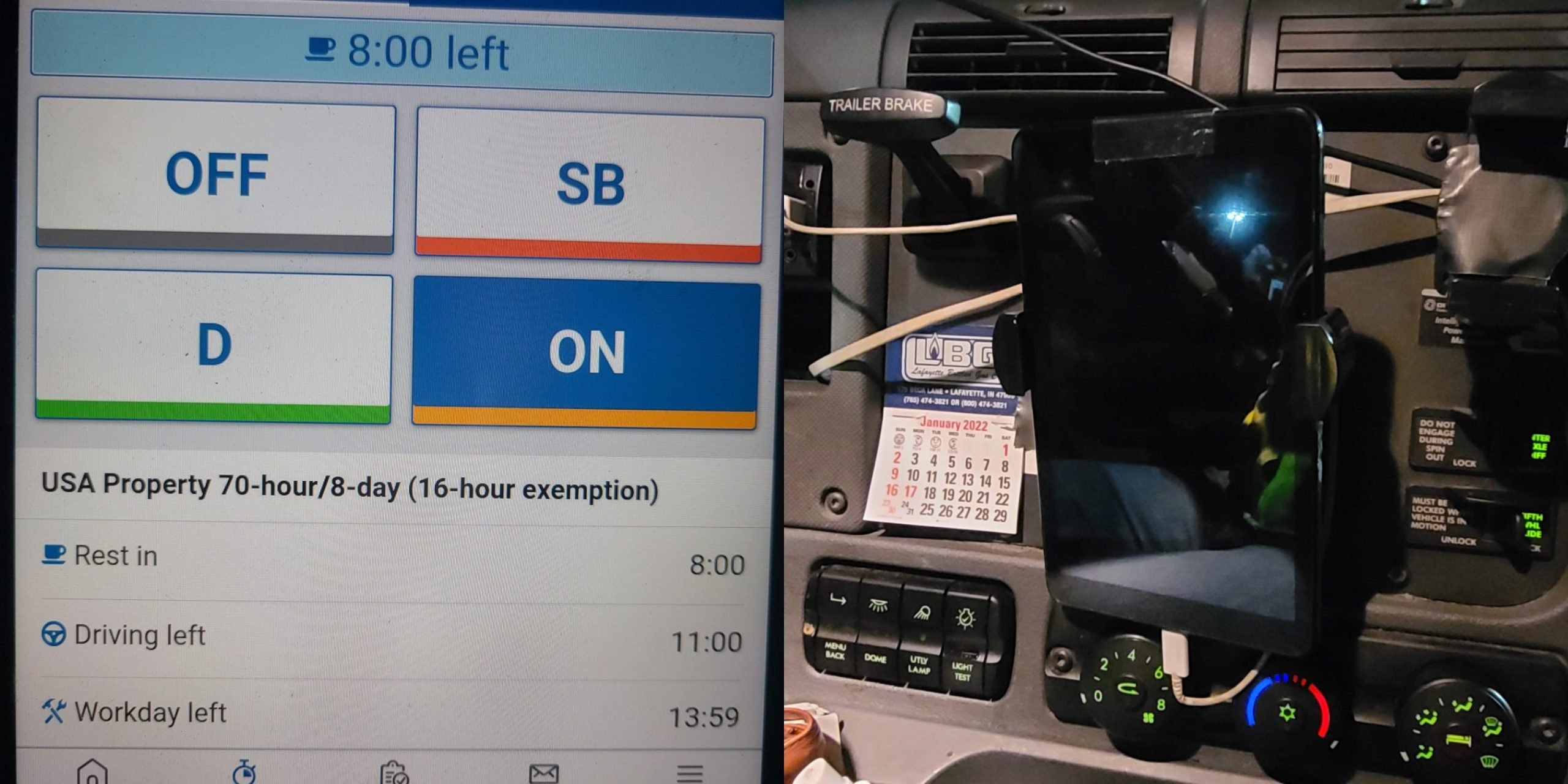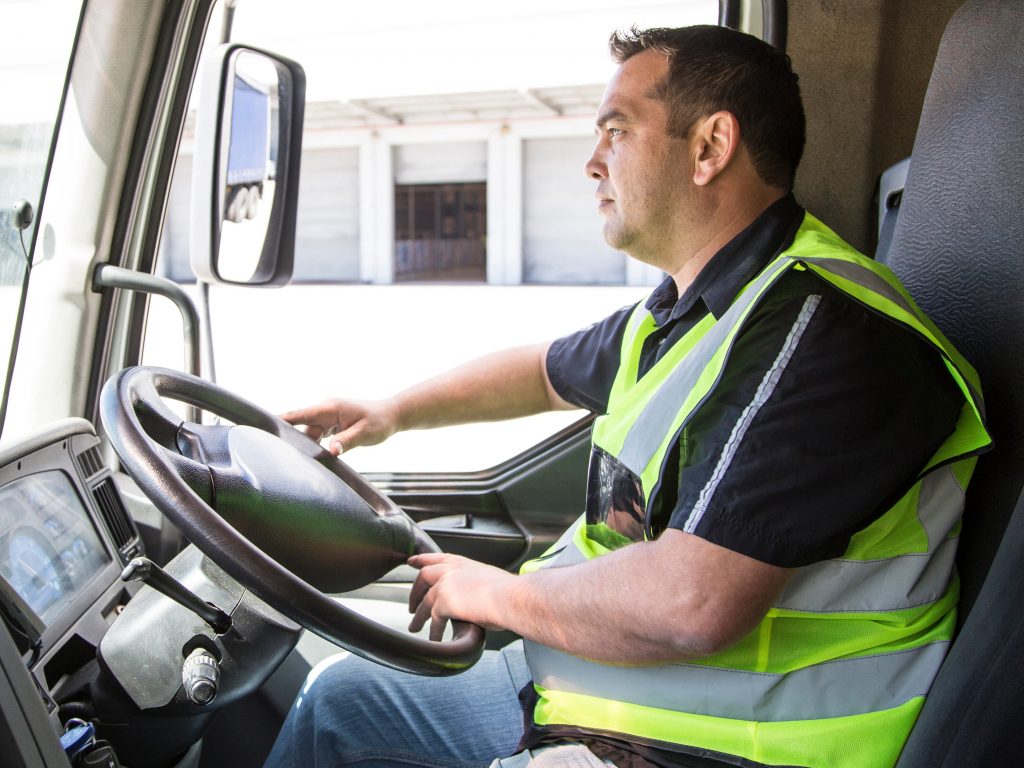
- Truckers are paid based on mileage but they're only allowed to drive for 11 hours each day.
- Electronic devices record how long they drive for — but truckers say these can be too restrictive.
- The limits could leave them stranded 30 minutes from home or stuck in a high-crime area, they say.
It wasn't low wages, long hours, or a lack of benefits that drove Brian Pape out of the trucking industry.
Instead, it was a tiny device that measured how many hours he drove each day and told him when to stop.
"That was it for me," Pape told Insider. "I sold my equipment and I was gone."
Truckers are allowed to work for up to 14 hours a day, with a maximum of 11 hours driving. They can't do this all in one go: after eight hours of consecutive driving, they need to take a 30-minute break.
These regulations have been in place for years but in 2017 the DOT scrapped the use of paper logs written by truckers and instead mandated electronic logging devices, known as E-Logs, that track when truckers drive and take breaks.
Truckers largely say they're in favor of the hours-of-service regulations but that E-Logs were sometimes too strict and left drivers stranded close to home or a truck stop.
"If you're 30 minutes from home and you get to your 11 hours, you must shut down or else you get an automatic hours-of-service violation," Pape said. This incurs a fine and could jeopardize a trucker's license.

Pape said that prior to the introduction of E-Logs he sometimes exceeded the 11-hour limit by around an hour to reach a certain destination, but never "to a dangerous level." Other truckers made similar comments to Insider.
Mark Rumps, an Indiana trucker who runs the YouTube channel Trucking Answers, said that some companies even deliberately avoided using E-Logs by buying and refurbishing trucks with engines manufactured in 2000 or earlier because these are exempt from E-Logs.
Pape said just two weeks using E-Logs convinced him to quit driving after around 13 years.
Other truckers have been leaving the industry over low pay, long hours, and bad treatment from trucking companies, which has caused chaos across the supply chain.
Colorado-based trucker Brian Stauffer said E-Logs were one of the reasons why he quit long-distance driving, likening them to "trying to force a round peg into a square hole."
Stauffer said the "maddening" hours-of-service rules often didn't match drivers' body clocks. He said there should be exceptions, like if the driver reaches their 11-hour limit in a high-crime area and doesn't want to park there overnight.
Most truckers are paid based on mileage.
"Driving time equals miles on the road and miles equal dollars," said Doug Watters, a Mississippi trucker who's been in the industry for almost 30 years.
Stauffer said the hours-of-service policy "forces" truckers to drive even tired and go at high speeds to boost their mileage.
But truckers said that, prior to the E-Logs, some drivers cheated on their paper logs and drove recklessly to maximize their mileage, anyway.
And Rumps said that E-Logs held trucking companies "accountable" and meant they stopped pushing drivers to take more loads when they'd reached their limit.
The dispatchers and trucking companies "know now that they're gonna be held liable if there's any kind of evidence that they coerced or forced a driver to do anything out of the ordinary," Watters added.
Truckers said E-Logs were more convenient than paper logs, and Rumps said that ultimately, they simply reinforce policies that were already in place anyway.
"The same hours of service are in effect," he said. "Drivers were just violating them all the time to get home."
"If you violate the hours of service that's because you're not being paid properly," Rumps added.
Are you a trucker with a story? Email this reporter at [email protected].
